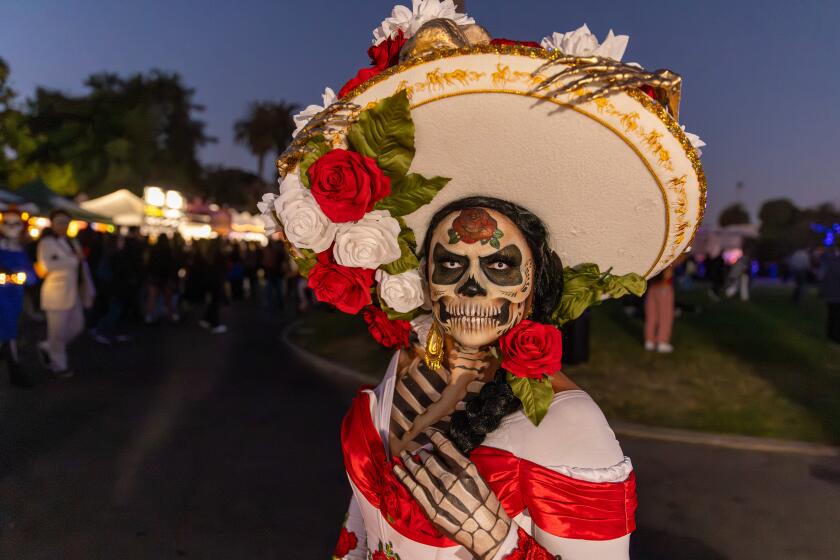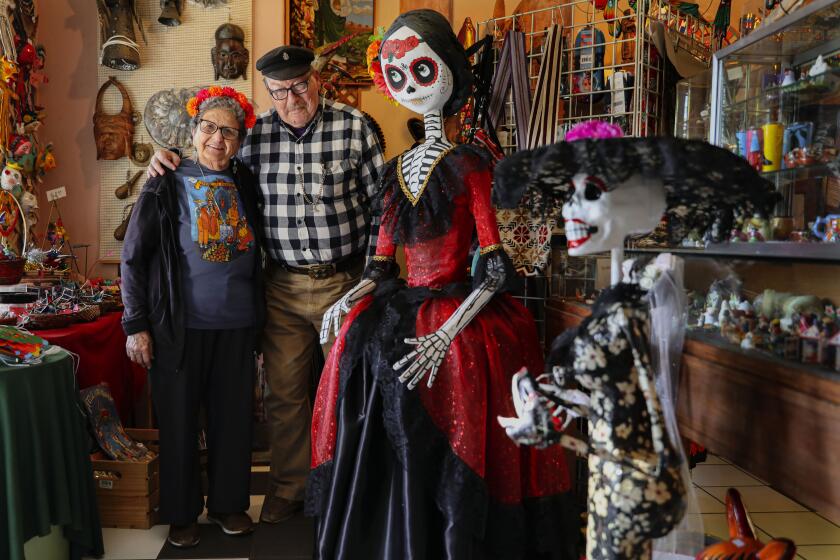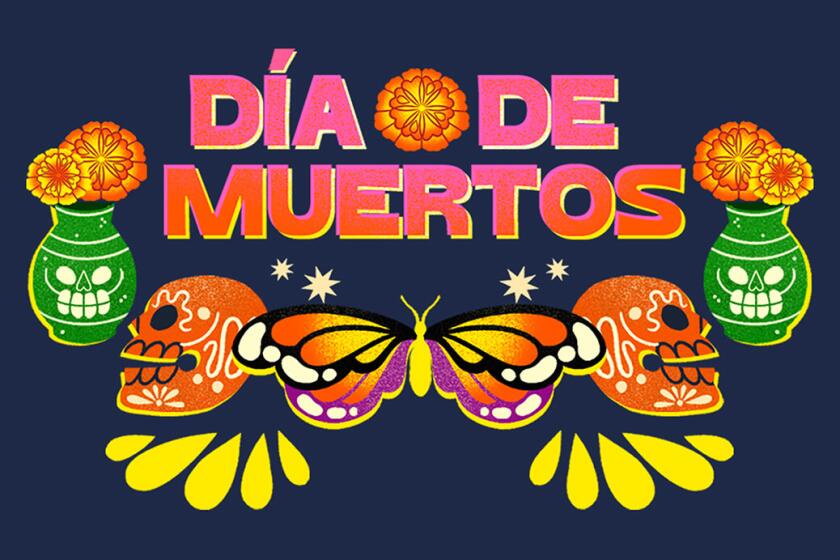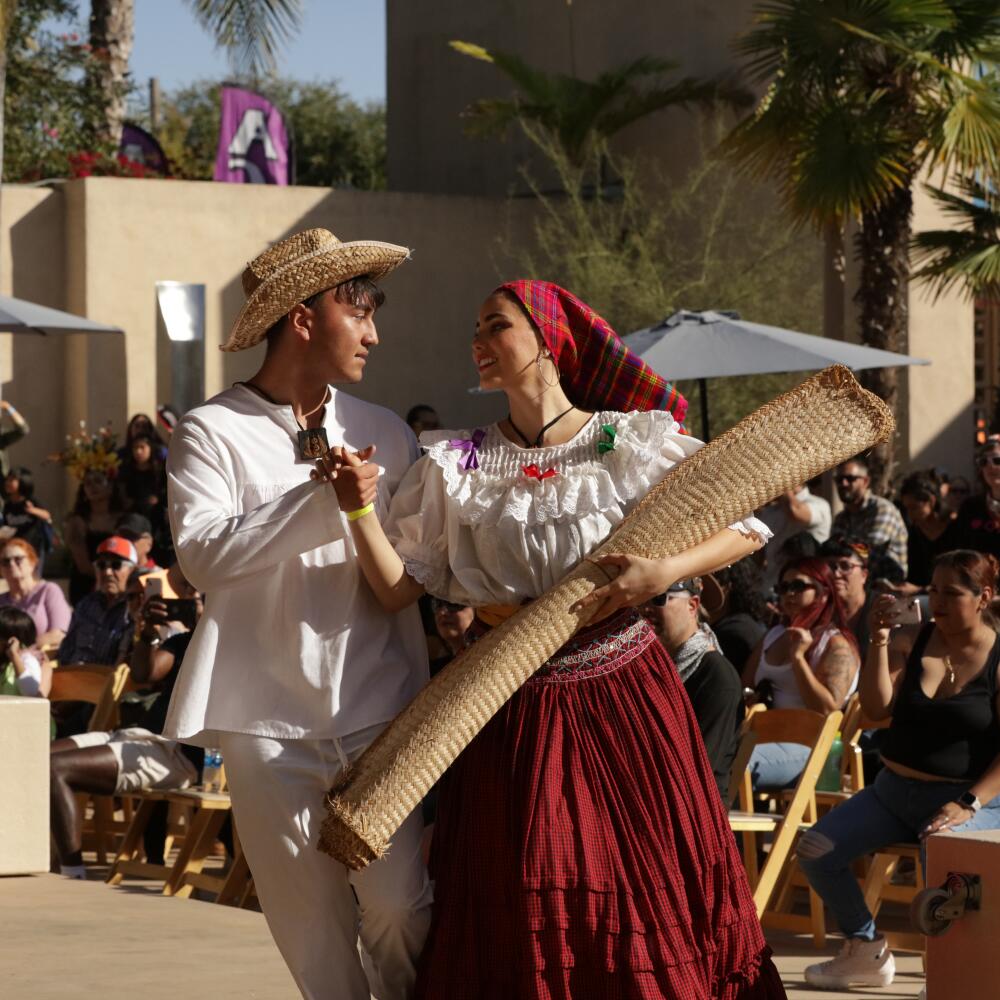
This year’s theme for the annual Day of the Dead festival at Long Beach’s Museum of Latin American Art (MOLAA) celebrated tradition with “Hecho con Amor/Made With Love.” It was a commemoration of life through visual art, dance and cuisine.
Held Sunday, the festival paid tribute to the museum’s current exhibition, “Festín de Sabores, Banquete Mexicano,” in partnership with the Museo Nacional de Arte, Mexico.
“The [show] talks about food within the narrative of Mexico, in particular,” said Solimar Salas, vice president of content and programming at MOLAA. “Throughout several curatorial themes: market and harvest, the intimacy of cuisine, still life and contemporary cuisine, we have paintings, drawings, installations and very traditional vignettes or scenes from public markets.”
On view, select works center on food or silverware, with, for example, a calavera pattern. A grand table setting, “La Mesa Mexicana,” created by renowned Mexican artist Alfredo Marín Gutiérrez, showcases colorful tapestries and ornate vases. These elements connect to an awareness and understanding of dishes and gatherings that offer sustenance regarding memory and culture, Salas said.
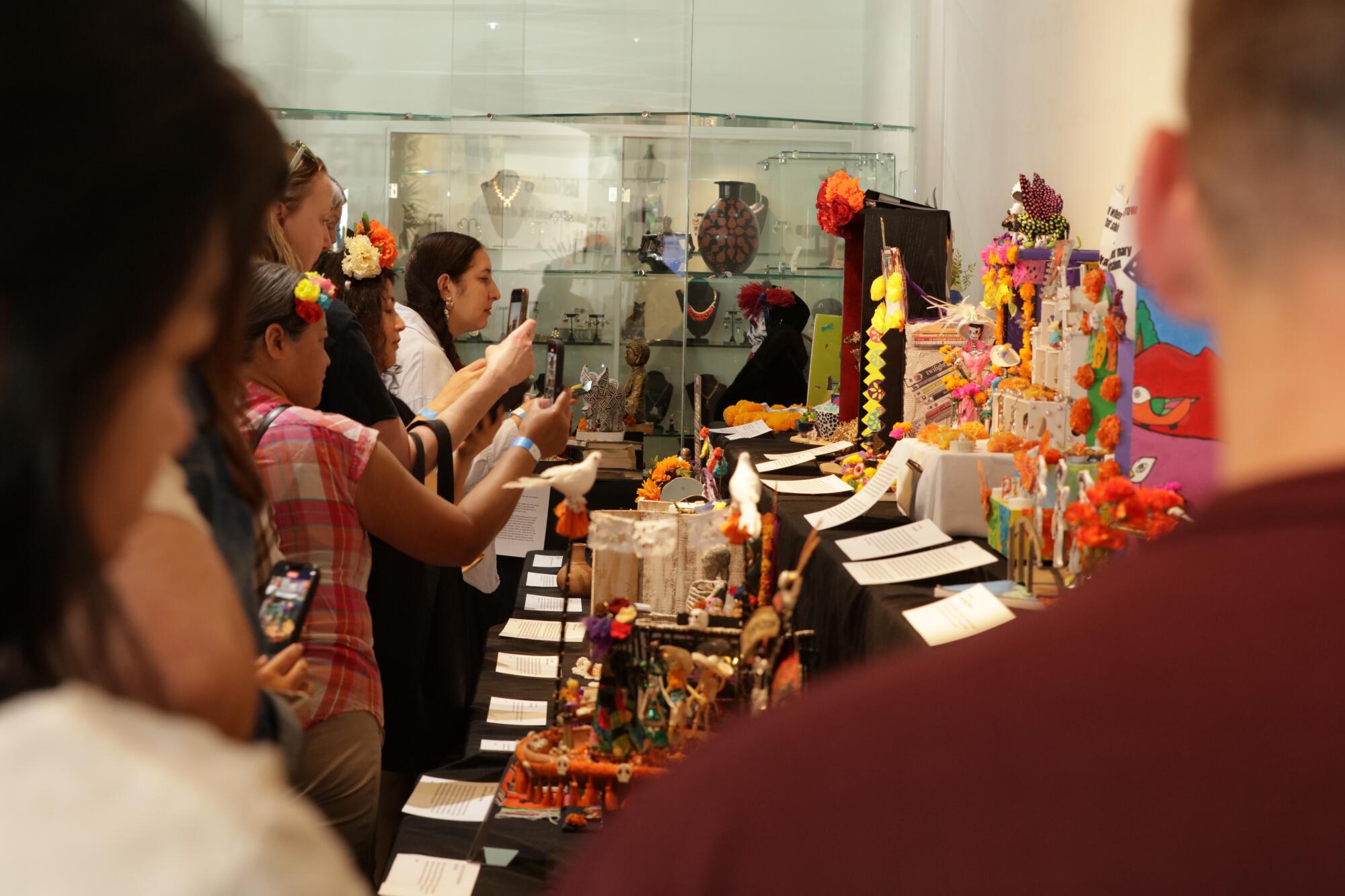
“Regardless of where you’re from, food is always sort of a cornerstone or an anchor for memories and family stories,” she said. This idea translated into MOLAA’s Day of the Dead programming.
The education department at the museum spearheads the Día de Muertos event, Salas said. With an expected 2,000 attendees by the end of the day, guests had an opportunity to explore different exhibitions and engage in activities.
Altars, traditional dances and musical performances filled Hollywood Forever Cemetery for the 24th annual Día y Noche De Los Muertos.
One of its partners, LA Opera and Hispanics for LA Opera, donated a prize for the winner of the Catrina costume contest.
Denise Guzman, one of the contestants, said her gown was inspired by the colors of the San Francisco 49ers. Guzman decided to go all out for her grandma, who recently passed away. “She always supported me in my art,” Guzman said.
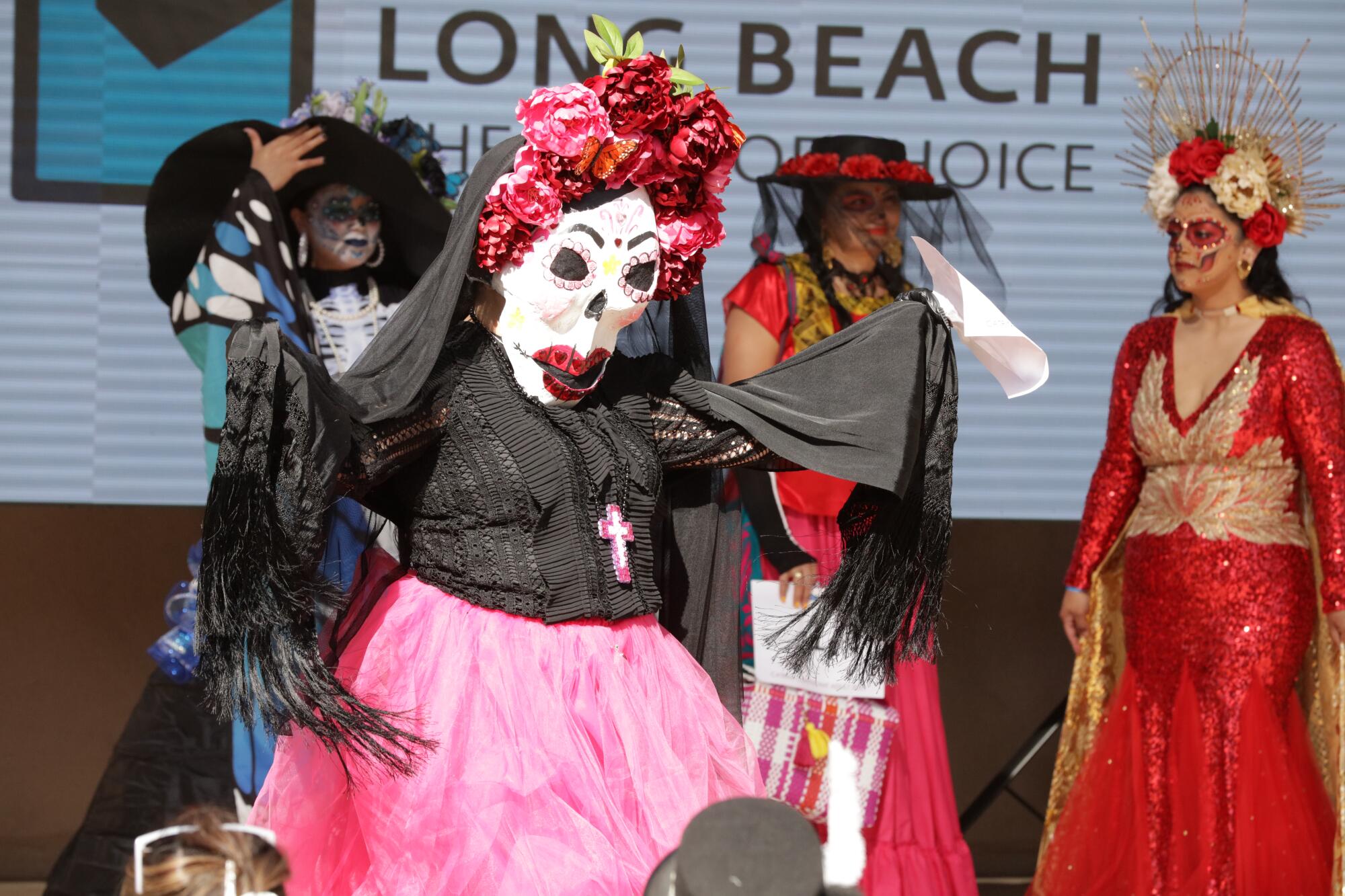
Merchants also offered various wares of craftsmanship, including apparel, handmade jewelry and accessories and reading material.
Comic book creator Javier Hernandez of Los Comex produced a story “El Muerto,” which is about a young man born on the Day of the Dead and resurrected by the Aztec god of death. Hernandez said Día de Muertos is a beautiful custom and a way to generate and honor loved ones who passed on.
“I like to say it is Mexican Valentine’s Day,” he said.
Author Naibe Reynoso, founder of Con Todo Press, which publishes bilingual children’s books and is based in Los Angeles, said her mission is to highlight and elevate Latino stories. “There is always a child within us,” she said. These books are meant to be shared among family members, regardless of age.
Back From Tomboctou in San Diego hosts an annual ofrenda-making workshop for those looking to honor and celebrate their dead loved ones for the holiday.
Reynoso was happy to participate as a vendor, specifically for a holiday like “Día de los Muertos, [which] is one of our favorite and beloved festivities of the Latino culture,” she said.
Rosie Prieto, who offers confections in Comadres Cookies, was inspired by her grandmother.
“I loved being in the kitchen with my grandma,” she said. “So when I think of food, it is about bringing families of different generations together.”
Attendees could also immerse themselves in face-painting, arts and crafts workshops and printmaking.
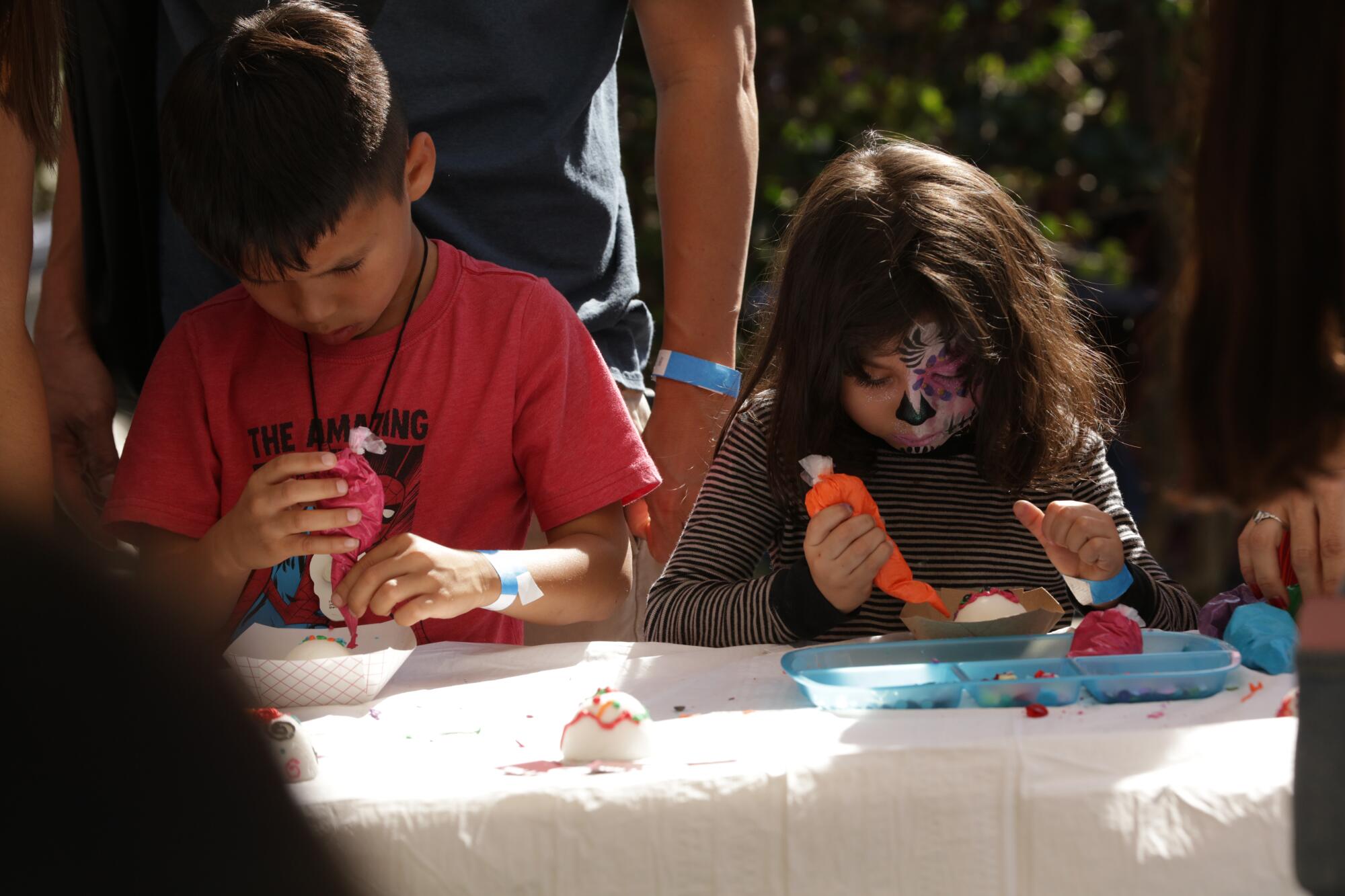
It was a family affair for many, including Geannie Corona, who wanted to show her mother-in-law visiting from Mexico a good time.
Imee Barrera, too, came with her immediate family — she said it’s important to connect with her cultural roots.
The holiday is an opportunity to spend time with the memories of those who came before us, and celebrate life.
Throughout the programming, live dance performances brought crowds together in the outside area of Robert Gumbiner Sculpture and Event Garden.
A band accompanied the Oaxacan Ballet Folklórico Nueva Antequera, formed in 1999. They performed four dances, each representing a different region. Flor de Piña, a folk dance indigenous to San Juan Bautista Tuxtepec, presented around 15 dancers, each wearing hand-embroidered regalia representing different communities.
1
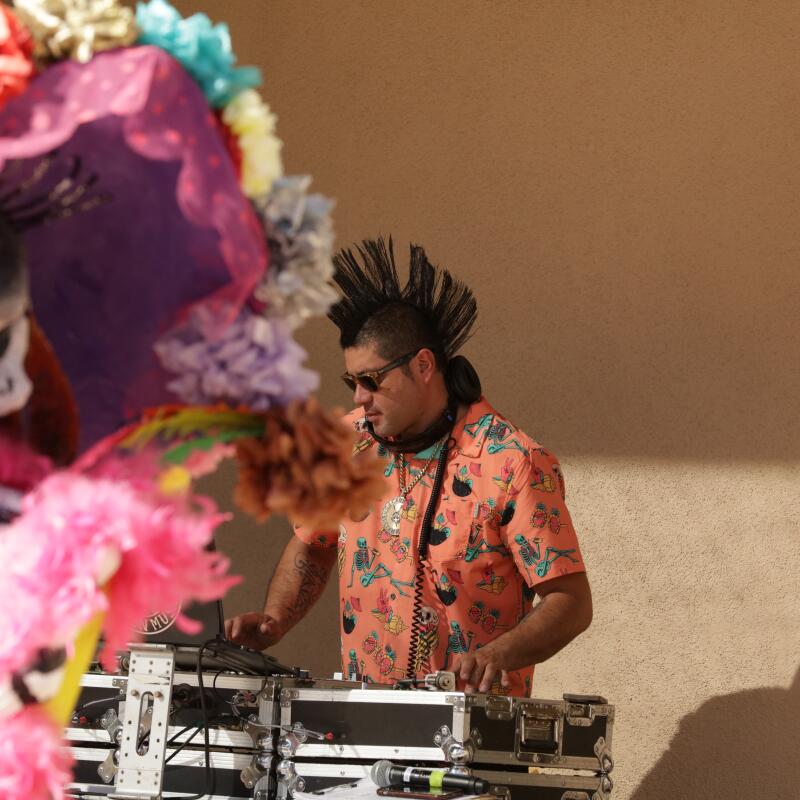
2
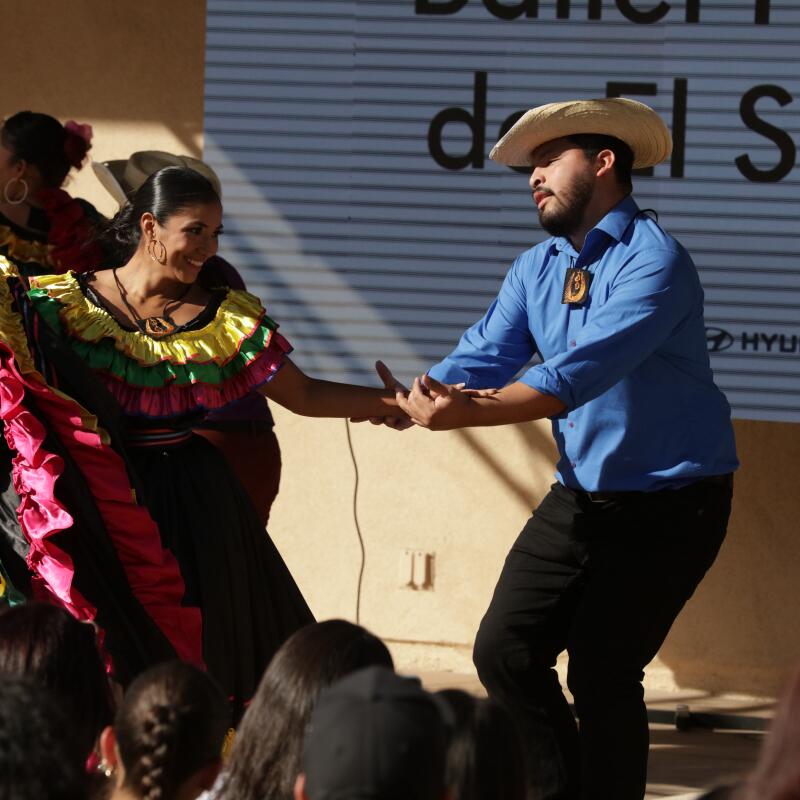
3
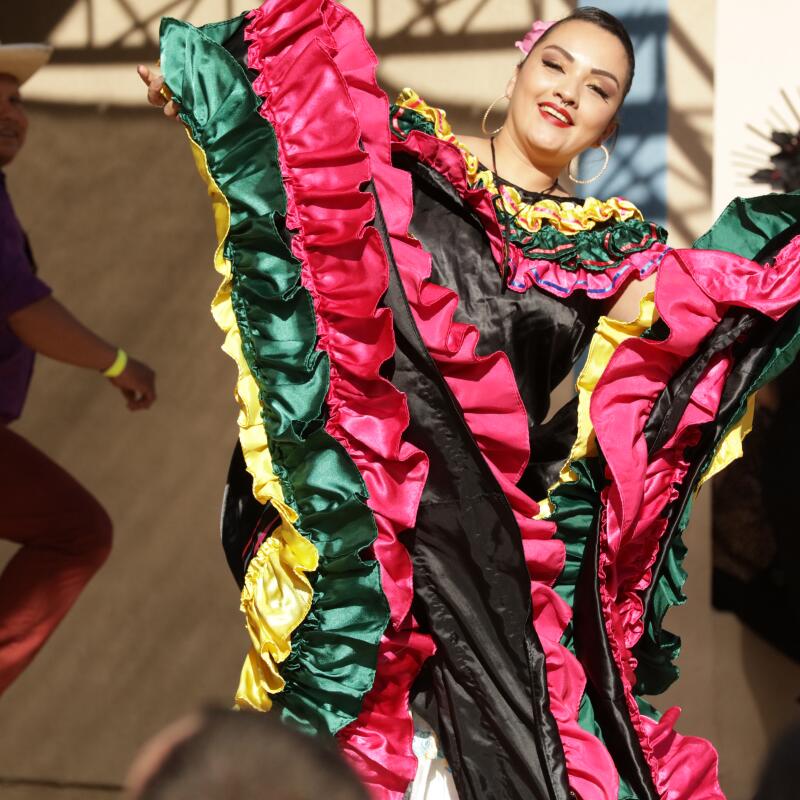
4
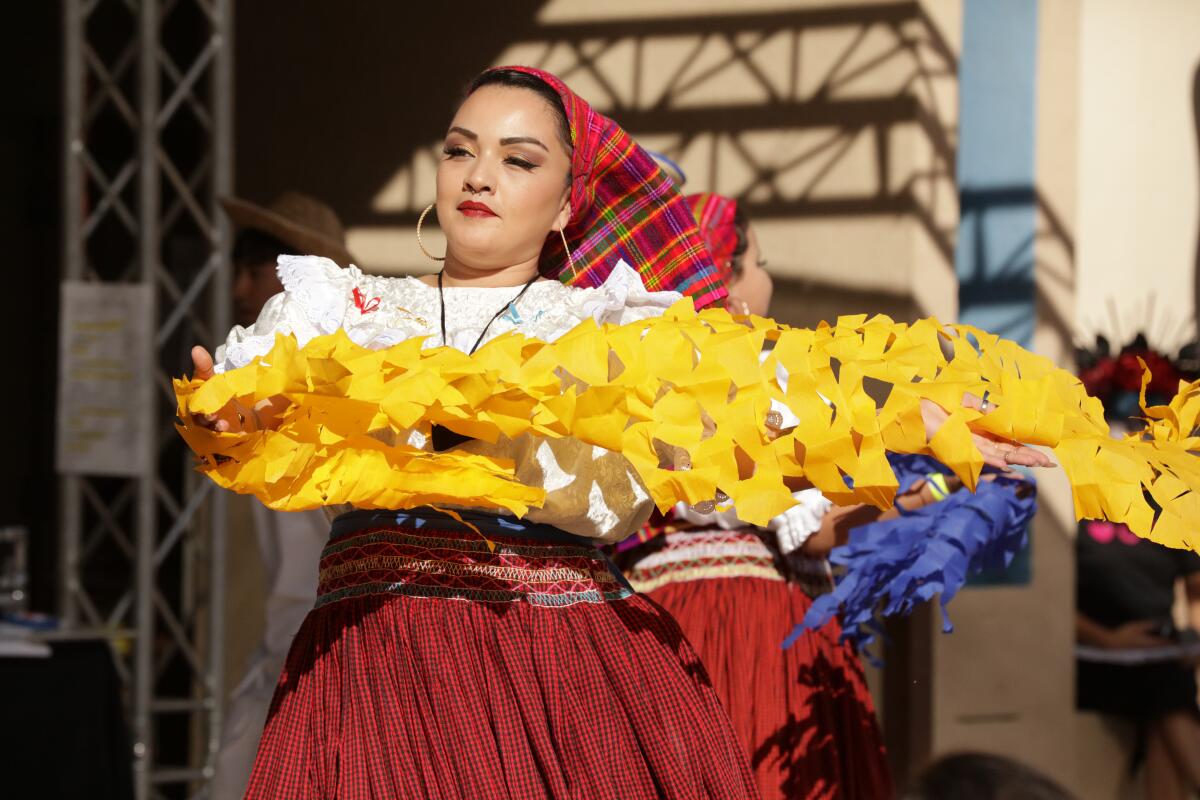
1. DJ Caveman plays music for guests. (Lorena Endara / For De Los) 2. Presentation by the Ballet Folclorico de El Salvador. (Lorena Endara / For De Los) 3. Performer from the Ballet Folclorico de El Salvador. (Lorena Endara / For De Los) 4. Performers from the Ballet Folclorico de El Salvador. (Lorena Endara / For De Los)
Sandra Martinez, who has been dancing for nearly 20 years, said they are regulars at MOLAA. She said “every dance has its meaning and characteristic,” such as the choreography for the pineapple dance seen at the Guelaguetza festival.
“The harvest of pineapples is meant to give thanks — this ties to Día de Muertos because we are not only remembering our ancestors but honoring them through [movement],” Martinez said.
Día de Muertos is a time to celebrate and honor the dead. From ofrendas to James Bond, De Los explored the origins and evolution of the holiday.
Danza Azteca Xochipilli closed out the presentation with a ceremony. In a call and response, they taught words in Nahuatl, introduced instruments and explained the sounds they carried, as well as the spirituality. They looked out into the audience, feathers pierced in headdresses and invited them to partake in harmonic dances, acknowledging humanity and creation in observance of Día de Muertos.
Sarah Quiñones Wolfson is a Los Angeles-based journalist with experience crafting stories focusing on the intersection of arts, culture and social justice. She has written for outlets like the Los Angeles Times, Hyperallergic and KCET.
More to Read
The Latinx experience chronicled
Get the Latinx Files newsletter for stories that capture the multitudes within our communities.
You may occasionally receive promotional content from the Los Angeles Times.
